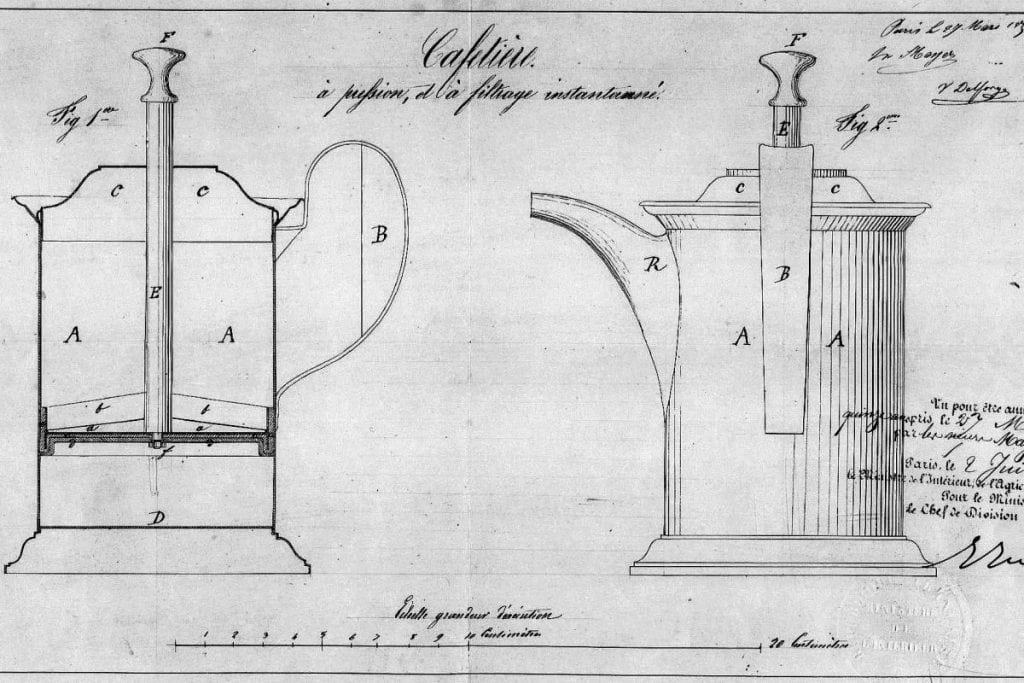
One of the most basic of filter brew methods is still one of the most widely used. The humble plunger, also known as the French press.
As always, there is some legend as to the origins of this particular method. The popular story is that a Frenchman was going to make some coffee in a pot over an open fire. He had forgotten to put the coffee in before boiling the water. Upon adding the coffee, it all had floated on top of the water. Not wanting to waste the last of his precious coffee, he bought some screen off of a passing Italian merchant, and pushed it down into the pot with a stick. The resulting brew was surprisingly good. Don’t most stories deserve a happy ending?
Initial designs for the vessel we know today date back to the 19th century. Two Frenchmen, Mayer and Delforge, patented a simple version, they named the Cafetiere.
Brewing in a Plunger/French press is a very simple process. It often
gets a bad rap for having sludge at the bottom of the cup. You can
deal with this in two ways – 1. strain through some sort of cloth
or paper filter (I prefer cloth as it is reusable), 2. Allow the
grinds to settle to the bottom and only push the plunger down to just
below the liquid’s surface. Either way is suitable to enjoy a
sediment-free brew.
Weigh out your coffee. I typically dose 60g/1000g water (remember 1g of water equals 1ml).
Fill the kettle with the required amount of filtered water (tap water is fine if you live in an area with low minerality). I usually add extra water to have a larger thermal mass, which makes the water volume cool slower.
Grind the coffee. Use a medium grind, about the size of grains of salt. Place grounds into Plunger.
Just off the boil, pour about 100g of water into the plunger and swirl slightly. You’re preparing the grounds for extraction. Count to 10.
Pour the rest of the required water into the plunger, pouring down the side, agitating the grounds using the flow of the water.
Just let it sit. Be patient, and wait until the coffee settles on the bottom. It will take about 8-10 minutes or so.
Put the lid onto the plunger and plunge down to just under the surface of the liquid. The aim is to not disturb the grounds at the bottom.
Slowly pour into your drinking vessel of choice, and wait a few minutes before drinking. The flavours and sweetness really come out when the brew starts to cool. Alternatively, you can pour the brew through a filter to ensure no sediment in the bottom of the cup.
